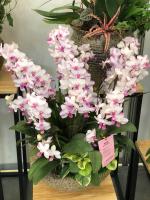How Long to Veg a Pot Plant?
One of the most common questions among first-time cannabis growers is how long to veg a pot plant. The vegetative stage is critical to the overall growth and development of the plant, as it lays the foundation for the flowering stage where buds are produced. In this article, we will explore the different factors that influence the length of the vegetative stage and how to determine the optimum length for your plant.
Factors Affecting Veg Time
The length of the vegetative stage can be influenced by various factors, including the strain of the plant, the grow medium, the nutrients available, and the lighting schedule. Different strains have varying growth rates, and some may require more or less time to reach maturity. Similarly, the type of grow medium used, such as soil or hydroponics, can impact how quickly the plant grows. The nutrients available to the plant can also affect its growth speed. A well-fed plant will typically grow faster than one that is nutrient-deficient. Finally, the duration and intensity of the lighting schedule can impact how long the plant stays in the vegetative stage. Longer light cycles typically lead to longer vegetative growth periods.
Determining the Optimum Veg Length
While the ideal length of the vegetative stage will depend on various factors, most growers aim for a veg period of 4-6 weeks. This is typically long enough for the plant to establish a robust root system and develop strong branches and leaves. However, some strains may require longer or shorter veg periods, and it's essential to pay attention to the individual needs of the plant. Watching for visual cues, such as the growth of new leaves or the development of buds, can help you determine when it's time to switch to the flowering stage.
Benefits of a Longer or Shorter Veg Period
While most growers aim for a 4-6 week veg period, some choose to extend or shorten this time to achieve specific goals. A longer veg period may lead to larger plants with a more extensive root system, resulting in higher yields. However, it's important to keep in mind that the longer the veg period, the longer the overall grow time and the larger the investment in lighting and nutrients. A shorter veg period may result in smaller plants with less foliage but can also lead to a quicker harvest.
In Conclusion
While there is no one-size-fits-all answer to how long to veg a pot plant, most growers aim for a veg period of 4-6 weeks. The ideal veg time will depend on various factors, including the strain of the plant, the grow medium, the available nutrients, and the lighting schedule. Paying attention to the plant's visual cues and understanding the benefits of a longer or shorter veg period can help growers determine the optimum length for their unique growing conditions.

 how many times do yo...
how many times do yo... how many planted tre...
how many planted tre... how many pine trees ...
how many pine trees ... how many pecan trees...
how many pecan trees... how many plants comp...
how many plants comp... how many plants can ...
how many plants can ... how many plants and ...
how many plants and ... how many pepper plan...
how many pepper plan...

































